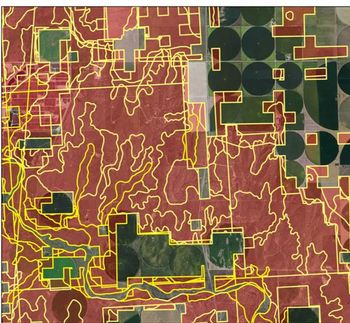Global Biotech Area Surges Past 100 Million Hectares on 13 Percent Growth
Study predicts 200 million hectares, 20 million farmers by 2015
Advertisement
Farmers continued rapid adoption of biotech crops around the globe in 2006 driving multiple adoption milestones for the technology-enhanced crops that produce greater yields of food, feed, fiber and fuel, according to an annual report released by the International Service for the Acquisition of Agri-Biotech Applications (ISAAA).
At the beginning of the second decade of biotech crop adoption, biotech crop area jumped 12 million hectares or 13 percent to reach 102 million hectares, breaking the 100 millionhectare mark for the first time and achieving the second highest growth in the past 5 years. Growth for the period 1996 to 2006 is equivalent to an unprecedented 60-fold increase, the highest adoption rate of any crop technology. Additionally, the number of farmers planting biotech crops surged past 10 million for the first time, to 10.3 million, from 8.5 million farmers in 2005.
Clive James, chairman and founder of ISAAA and author of the report, expects these adoption levels to continue accelerating throughout the second decade of commercialization. By 2015, ISAAA predicts more than 20 million farmers will plant 200 million hectares of biotech crops in about 40 countries. "More than 90 percent or 9.3 million farmers growing biotech crops last year were small, resource-poor farmers from the developing world, allowing biotechnology to make a modest contribution to the alleviation of their poverty," James said. "Millions of small, resource-poor farmers will turn to the potential biotech crops offer in the next decade."
In fact, the report indicated that the growth of biotech crop adoption was substantially higher in the developing world at 21 percent versus the industrialized nations where adoption grew 9 percent. Developing countries now account for 40 percent of the global biotech crop area.
In 2006, there were key growth centers on each of the major continents providing a broad and stable foundation for biotech crops in the second decade. Furthermore, while 22 countries planted biotech crops last year, the report indicated an additional 29 countries have approved biotech crops for import for food/feed use and release into the environment.
Key Growth Centers
The Americas: The United States continues to drive growth in North America and globally, accounting for the greatest absolute acreage increase in 2006 with the addition of 4.8 million hectares. Brazil leads growth in South America with an increase of 22 percent to total 11.5 million hectares of soybeans and biotech cotton, the latter commercialized for the first time in 2006.
Asia: India is emerging as a key leader in Asia. The country tallied the most substantial percentage increase at 192 percent or 2.5 million hectares to total 3.8 million hectares, jumping two spots in the world ranking to become the fifth largest producer of biotech crops in the world, surpassing China for the first time.
Africa: South Africa made significant strides in the past year to lead the African continent forward by almost tripling its biotech crop area. Notably, the gain came from Bt white maize, primarily used for food, and Bt yellow maize used for livestock feed.
Europe: Growth also continues in the countries of the EU where Slovakia became the sixth EU country out of 25 to plant biotech crops. Spain continues to lead the continent, planting 60,000 hectares in 2006; however, the other five EU countries reported a five-fold increase in plantings from 1,500 hectares in 2005 to about 8,500 hectares in 2006.























































